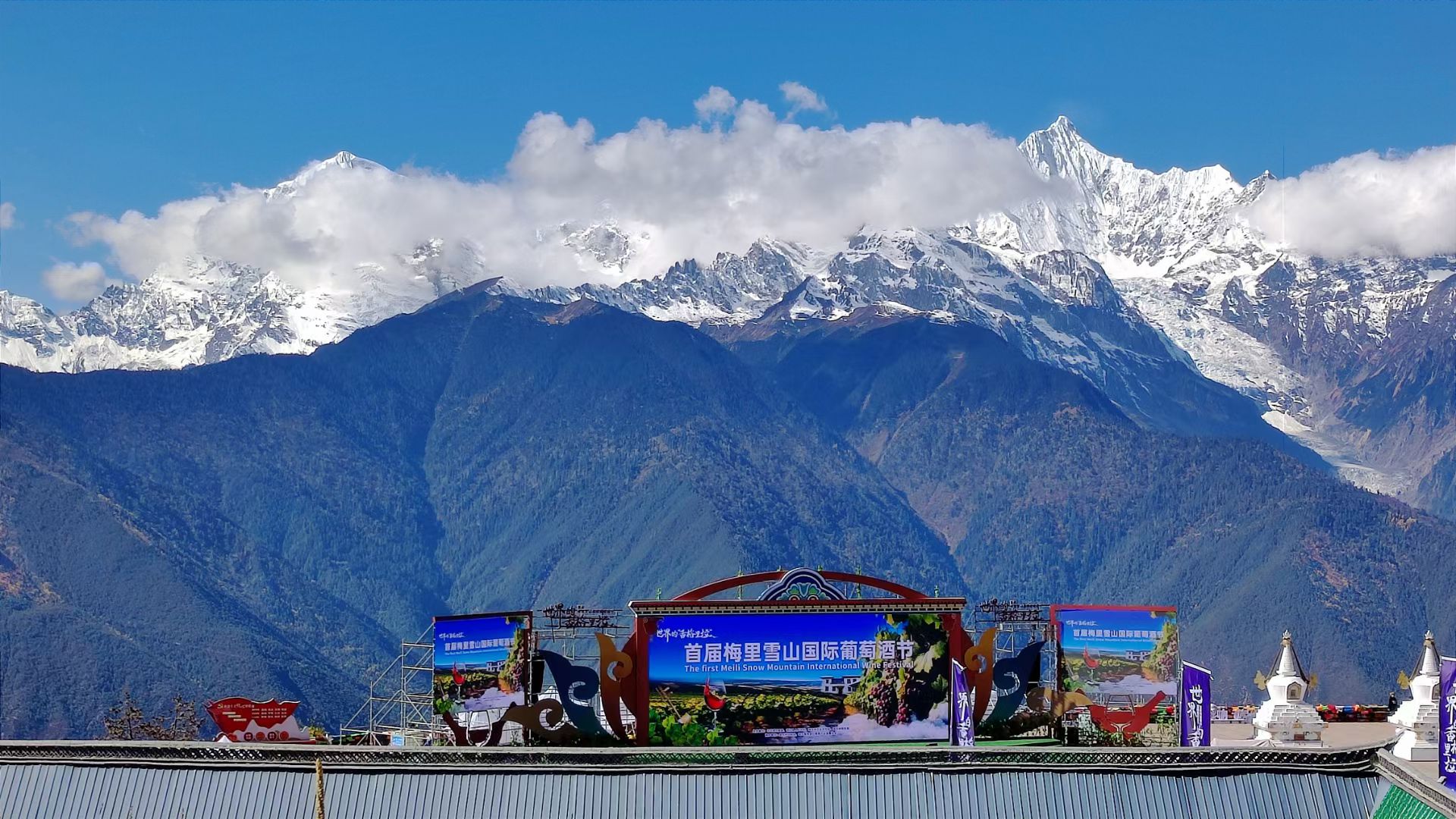Shangri-La! I joined the inaugural Meili Snow Mountain International Wine Festival this month, held at Yunnan’s northernmost point and perhaps best described as “breathtaking”–both for its stunning views and the effects of 3000 meters-plus of altitude. (Our hotel rooms came with canned air.)
The invitation, from the local authorities, said, “The conference aims to introduce the world to the long history of high-altitude grape growing and winemaking in Shangri-la’s secret land, Deqen County.”
And my role was to join an outdoor forum moderated by Ma Huiqin (China Agricultural University) and including winery reps Cui Kexu (Shangri-La), Peter Dawa Pinchu (Ao Yun) and Bertrand Cristau (Xiaoling) and KOL Antoine Bunel.
With five minutes of speaking time, including follow-up questions, I kept it short and—depending on your mental taste buds—sweet. My topic was the advantages of the region’s wines.
“Thank you, Ma Huiqin, and thank you, Shangri-la.
“We know right now that the world wine market is struggling, and the Chinese market is struggling even more, so every wine region has one question, ‘How do we sell our wine?’
“I’ve been drinking Shangri-La wine for about 20 years, and I’m going to tell you my five personal reasons why I find it attractive.
“First, exclusivity. There are many wine regions in China—Ningxia, Hebei, Shandong, Xinjiang and more—but they are at 1000 meters to sea level. This is the only region that is this high.
“And in the world, there are only a handful [of such high-altitude regions], so I think we should use this factor and also cooperate with other regions in Morocco, Chile and Argentina.
“Second, diversity. There is no one wine market in China. There are many wine markets based on income, generation, climate, cuisine and many other factors.
“Shangri-La is already doing well with the fine wine market, with Xiaoling, Ao Yun and Shangri-La.
“But they need to look to other markets, like craft wine, which appeals to younger consumers, such as natural wines and orange wines.
“Even today in Shanghai at the ProWine trade fair there are three craft producers pouring Shangri-La wines—FARMentation, Petit Mont and Xiao Pu—which shows you there is interest in this.
“Third, diversity, part two.
“Wine is seen as a very Western product, but if you are only promoting wine, it is too isolated.
“This region has other high-quality products we associate with the West, including coffee and truffles, and I think they should be packaged together.
“Fourth is health, a surprise answer. Surveys of Chinese consumers find they almost always have health as a top-three reason for drinking wine, and sometimes number one.
“And if you look at all the wine regions of China, I don’t think anything looks purer than Shangri-La, with its pure water, white snow and clean air.
“And number five is history. We learn that modern Chinese wine history starts in Shandong in 1892 with Changyu.
“But we know Chinese and Europeans were making wine here decades before that.
“I first learned about this when I visited far to the south in Yunnan with Ma Huiqin 16 years ago. And now I am learning it again firsthand this week.
“I think if you embrace this history, and combine it with exclusivity and diversity, Shangri-La can become a leading wine region. Thank you.
[Follow-up: What is the biggest challenge of promoting Shangri-La wines.]
“I think the biggest challenge here is the biggest challenge for everyone in China, which is this industry is so heavily focused on arguments from authority. Wine contests, wine scores, master classes and critics.
“None of these sell wine. Contests sell awards. Educators sell master classes. Trade fairs sell booths. And critics sell tasting notes. They are not selling wine.
“We have followed this trend for a dozen years and the result is wine sales are lower now than five years ago.
“So, we need a much heavier focus on connecting the people who make the wine and the people who drink it, directly contacting the consumers.”
[Finally, we were asked to finish with one sentence about Shangri-La’s wines.]
I simply said that when the story of Shangri-La is later written, it will be a story of quality rather than of quantity, with the potential to be the home of the very best wines in China.
Grape Wall has no sponsors of advertisers: if you find the content and projects like World Marselan Day worthwhile, please help cover the costs via PayPal, WeChat or Alipay.
Sign up for the free Grape Wall newsletter here. Follow Grape Wall on LinkedIn, Instagram, Facebook and Twitter. And contact Grape Wall via grapewallofchina (at) gmail.com.
